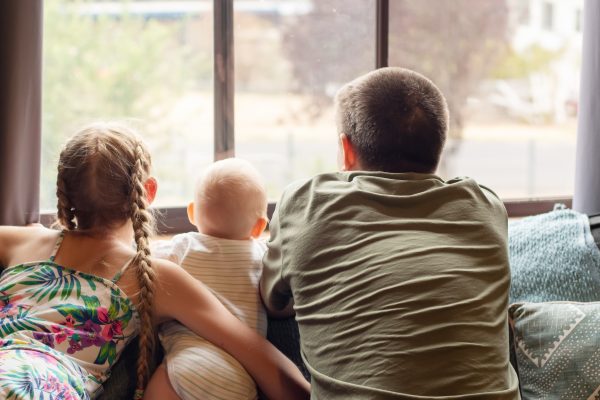
As restrictions start to ease, families are undergoing a new kind of post-COVID transition. Returning to what used to be “normal” routines and schedules isn’t necessarily as easy as it seems. Some locations have rules and restrictions that others don’t have. Some families need to take different precautions than others. Some children can and will be vaccinated, others can’t. All of this uncertainty means that just as parents and kids had to adjust to lockdown, they’ll have to adjust to coming out of lockdown. We talked to Paula Rauch, MD, Founder of the Marjorie E. Korff Parenting At a Challenging Time (PACT) program at Massachusetts General Hospital, to get her insights into what parents should expect during the transition — and how to manage it.
What parents can expect from the post-COVID transition
Let’s start with the obvious question: The world is opening back up in a lot of ways for most families. What can parents expect from this time of transition?
We know that transitions are difficult. Parents can think about how their child has reacted to other transitions, such as going to day camp, having a babysitter, starting a new school, or traveling to see relatives, because those reactions may give parents a clue as to how their child might handle this transition.
Past reactions provide some clues, but the combinations of restrictions and changes associated with the pandemic have been so substantial that it’s a little hard to fully anticipate our children’s reactions to this unusual set of circumstances. Parents also want to bear in mind: how they are reacting themselves. Our children trust us and emotionally reference off of us, which means that they look to read our faces and our voice tone to determine whether something is really safe, kind of safe, or not safe at all. So it’s a particularly important time for parents to take their own pulse and make sure that the messages they’re giving without words convey that these new changes are safe changes — and positive changes.
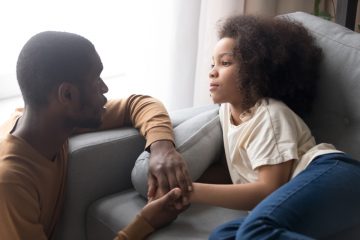 The transition has just barely started, so as you’ve said, it may be hard for parents to predict how kids will react in the long run. As a mental health professional, have you already seen some emotional or behavioral responses from kids who are reacting to re-entry from COVID restrictions?
The transition has just barely started, so as you’ve said, it may be hard for parents to predict how kids will react in the long run. As a mental health professional, have you already seen some emotional or behavioral responses from kids who are reacting to re-entry from COVID restrictions?
Yes. We’ve seen an array of mental health challenges while children and teens have been at home, especially older kids. But as things are opening back up and children get more access to their peers, the children who have felt more comfortable attending school virtually and not having such a high-stimulation life, for example, are not particularly welcoming being back in the hectic fray of school or afterschool activities.
There are also children who imagined that going back to school or to activities would feel the way they remembered it being before the pandemic. It can be distressing when it is not as anticipated. Maybe because the rules are different, or their friendship groups have changed or they have gotten used to a different pace of life. Unanticipated challenges for children and teenagers are especially difficult. So, it’s important for parents to know what the school or afterschool activity logistics are going to be, including drop off and pick up, which children will be in the groups with their child and which teachers or group leaders will be in charge, so together with their child they can anticipate what it may be like for the initial return to in person experiences.
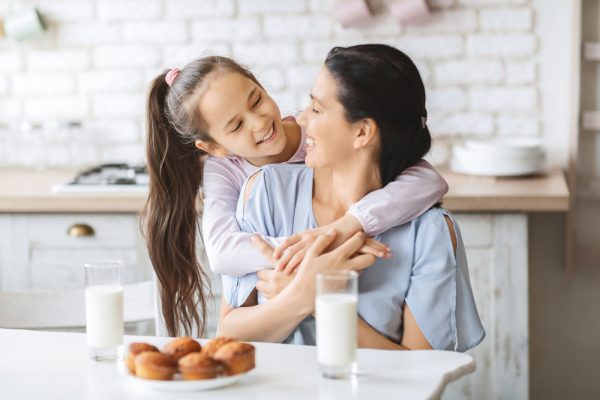
What parents can do to make the post-COVID transition easier for kids
So what can parents do to help kids “anticipate?” Especially for those kids who may be going back into a situation where they’re anxious about bullying or peer relationships, or for kids who find their friend groups have changed. What does that look like in terms of the conversations?
Parents can talk about not just what their own children are feeling, but what other peers may be feeling, too. Some children, when they feel uncomfortable, get bossy or pushy and others may be shy or withdrawn. Some may exhibit with bullying behavior. Some of the things they’re going to see, when other children are not following the rules or behaving badly, are because those children are feeling ill at ease, too.
You can talk to children about what they might anticipate doing in a tough situation with peers. What are their go-to strategies for responding to feeling unwelcome or unsafe? Maybe wonder with them whether, after being out due to the COVID restrictions, they may feel a little more independent. As they re-engage, it’s a moment to decide: What does it mean to be a good friend and to have a good friend, and maybe they can re-engage less with the peers who are not being good friends?
Are there other ways parents can talk to kids about “anticipating” what it will be like to be back in certain places and situations? Especially since some kids are more resistant to conversation than others, what can parents do?
Part of processing in anticipation is being curious together. “It could be like this, what do you think? Or it could be like that.” Creatively imagining together what’s coming is a wonderful agent of resilience.
Curiosity is also a way to get children to open up. Listen to learn. When children hear us being curious about the experience, and not telling them how to feel or what we think it was like, they are much more likely to talk to us. If you’re listening at least 2 times as much as you’re talking you’re heading in the right direction.
The other thing for older children, in middle school and up, you can start with asking your child about other children they know. “Is there anybody at school who’s having a really hard time?” It’s easier for teens to talk about somebody else — there’s more bandwidth because they feel less on the spot. If you’re worried that your teens might not be talking to you about their experiences, you could wonder “How would that child’s mom know that she was having a hard time?” and then kind of back into, “Do you think you would tell me if…?” Or “Why wouldn’t that child tell her parents…?”
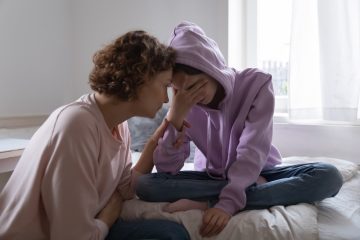 You’ve talked about anticipating what’s going to happen, and a little bit about processing what does happen when kids go back. Should parents also be talking about what’s happened during COVID, even though we’re re-opening?
You’ve talked about anticipating what’s going to happen, and a little bit about processing what does happen when kids go back. Should parents also be talking about what’s happened during COVID, even though we’re re-opening?
If there’s one thing I want parents to take away, it’s this: Help children and adolescents to know it’s not that they have lost 16 months, it’s that they have learned workarounds and had to be really adaptable. And also, they likely have been frustrated, lonely, confused, disappointed and sad, and they’ve weathered that, too. Use the experience to help them feel hardier and more resilient, heading into the new workarounds and adaptations that the next months will require. We know how to do this. We have done this.
We tell ourselves stories, and we can help our children to tell themselves more resilience-based stories. You might wonder what your child will tell his or her grandchildren when they ask about this pandemic time. You want to hear what their narrative is. Is it a narrative of: This was hard and we learned useful things? Or is it a narrative about this was terrible and it’s never going to be good again?
For kids who are in that “it’s never going to be good again” place, is that a red flag for parents? What do we do when kids are in a stuck mindset and we don’t feel good about the stories they’re telling themselves?
Parents can accept children’s views of the challenges of the past year. It’s not just a pandemic, there are layered challenges that our young people have borne witness to. It’s fair for them — especially older children, having grappled with racism, climate change, social justice and inequities of all kinds — it’s fair that this would be a year that would feel overwhelming. Let that child know you understand their point of view. Together, think about: “What is one thing we could do to make things even fractionally better?”
For some children, it feels safer to be negative right now because they don’t want to get their hopes up after a long time of hoping and being disappointed. Parents should be cautious to not fall into the trap of feeling that they need to be twice as positive, because they’ll get into a pattern where the child thinks the parents don’t get their perspective, and the more upbeat the parent is, the more negative the child will become. If you say it’s going to be all good, the child who’s feeling apprehensive will feel more alone, and that’s not helpful.
For some children, just getting back to good experiences will be helpful. Follow your child’s mood as things open up and they have more social contact. As things improve, if your child’s mood is not improving, it’s important to get help. If your child is feeling that life is not worth living, call your pediatrician, call a mental health person, contact your child’s school. Because mental health needs are so high right now, you have to persevere to get help, but seek it.
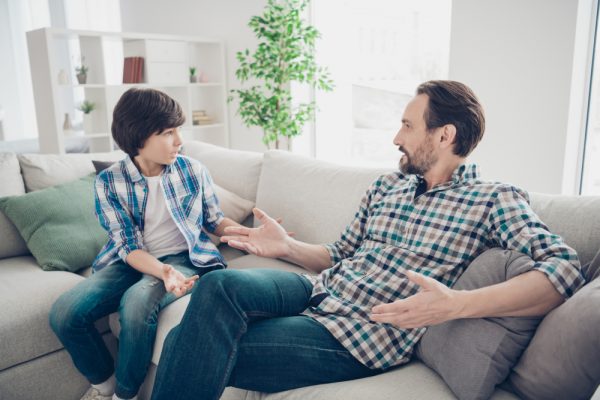
How parents can set expectations to manage the transition
Although restrictions are easing in many ways, there are some families who are in a tricky spot. For example, some have older children who are fully vaccinated (or soon to be) and younger children who are not able to receive a vaccine yet, and the mask rules or distancing rules in public are different for different family members. What advice do you have for these families, who are stuck in the gap?
For the youngest children, it will be difficult for them to understand why they need to wear a mask and why parents or older siblings don’t need to. It may not seem fair. Think about what you want to message as a parent, especially for younger children who learn as much from what we show as what we tell. Parents may make a decision that they want to wear a comfortable mask when they’re out with their child. Children do better when the rules are pretty consistent, and this is a chance to practice, so that wearing a mask becomes pretty regular and not something you fuss about as much.
Parents should take the word “have to” out of it — we’ve “decided to” wear masks together. I would remind families that we’ve all been making risk assessments, even before COVID. Every time you get into a car, you make a risk assessment. We do many things for safety, not because it’s very, very risky, but because we want to be extra safe: car seats, bike helmets. We don’t expect to have a car accident, but car seats and seat belts are an extra safety measure. One way to think about masks and COVID rules is that they are an extra safety measure.
 What are some helpful things parents can do to help the whole family manage their expectations of what the transition will be like?
What are some helpful things parents can do to help the whole family manage their expectations of what the transition will be like?
People should think about it taking as long on the other side of this pandemic to reestablish a sense of confidence in the world as the time we spent coping with the changes. If you think about things really opening up by July 4, consider it taking 16 months from July before it feels like things are going to occur more normally.
For the next six months, we should anticipate that there will be stumbles and setbacks. Promising that it will not happen again is a guarantee of losing our credibility with children. There’s not going to be a COVID Is Over Day when everything goes back to pre-COVID. In fact, it will never be the same, but that doesn’t mean it won’t be free and open and joyful.
I like to think about this as having been in some ways like a tunnel. When you exit the tunnel, you don’t exit in the same place you entered. You exit in a new environment, your eyes readjust to the light, and you take in the new scenery. As we exit the tunnel, parents can remind their children of where we’ve been, and that we know how to handle setbacks now. We understand how to do this.
Some families have said they felt more bonded during the pandemic, and that they got closer or got to know each other better than before. What can families do to retain some of that closeness and a better sense of the family unit when there’s going to be an understandable rush to return to “normal life?”
It’s never possible to “go back.” Parents shouldn’t worry that they’re going back to something — they should look at schedules and routines and be mindful about making some changes going forward to hectic routines, if they’re realizing that they were too busy before. But we’re all going to move forward from a different place.
We are all survivors of the pandemic. Many of us have family members or friends who are not survivors. For those families, what it means to return is different. And for all of us there have been mini losses. Events that didn’t occur. Things we missed, such as graduations, a sports season, a planned family visit, that will not have happened and we need to give ourselves permission to grieve these losses too.
The process of continuing to have conversations, to notice what we have appreciated, to think about what it means to sustain the communication that’s been established — talk about it, build in rituals. Maybe even when activities are up and running again, Tuesday and Sunday are sacrosanct dinners together. Or maybe it’s one evening and one breakfast. But preserve some of that family time. We want children to feel like they are part of a family they want to be part of. Having family rituals that children can lean into, those are always helpful in the context of disruption, and they help us to make the decisions about preserving family time more mindfully.
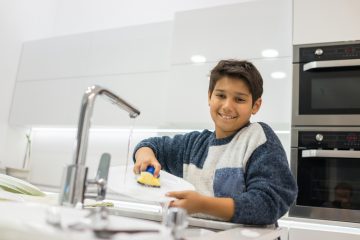 It seems like there are going to be trade-offs for families. Some kids might have learned to contribute to the household more during this time. But as we get back to busy schedules, some parents want to “make up for” the past year by letting kids focus on those school and extracurricular opportunities they’ve missed out on, and skipping some of those newly established responsibilities. What are your thoughts on this tension between encouraging responsibility, and wanting them to get all the experiences they missed out on?
It seems like there are going to be trade-offs for families. Some kids might have learned to contribute to the household more during this time. But as we get back to busy schedules, some parents want to “make up for” the past year by letting kids focus on those school and extracurricular opportunities they’ve missed out on, and skipping some of those newly established responsibilities. What are your thoughts on this tension between encouraging responsibility, and wanting them to get all the experiences they missed out on?
If you come with the mindset that you’ll make up for the pandemic, you’ll never achieve that goal. You can’t change the past. What you can do is learn from it and pick and choose wisely: What are things that we’ll really want to do because we missed them, and it will be fun to do them? Parents didn’t cause the pandemic and it’s not their job to compensate for it. We lived through it together, we did the best we could, and along the way we learned some things — including the fact that we might be hardier than we imagined.
Being able to face obstacles and get around them, being able to bear age appropriate frustrations and disappointments, helps children to be more confident. Many of the things that we call chores are life skills, and it’s unhelpful if children never learn to do these independent life skills. What are the 2 or 3 things that a child feels good about completing, or the 2 or 3 things that a parent feels are most important? It’s a positive when parents acknowledge that they appreciate it — being a member of a family you want to be part of includes feeling like you have a real contribution to make, and that contribution is appreciated.
This has been so helpful. Last question: During these 16 months of anticipated re-entry, what are the three questions you think parents should be asking at the dinner table?
The three questions I would want parents to ask during these next months are the same three questions I would have wanted parents to ask before COVID, and during COVID. They are:
- What was your favorite thing you did today?
- What was the hardest thing you did today?
- And what’s something you did today that you’re proud of?
And if you wanted to add a bonus question, you could ask a child: Are there things you learned during the pandemic that changed how you dealt with something at school today? But those first three questions are questions that I recommend parents asking anytime, and those have not changed.
Get more guidance from Dr. Rauch and her colleagues at PACT by visiting their COVID resources page for parents.
